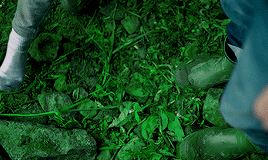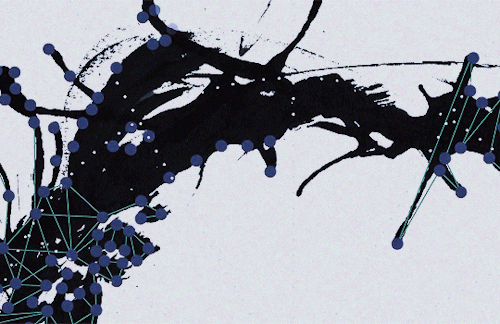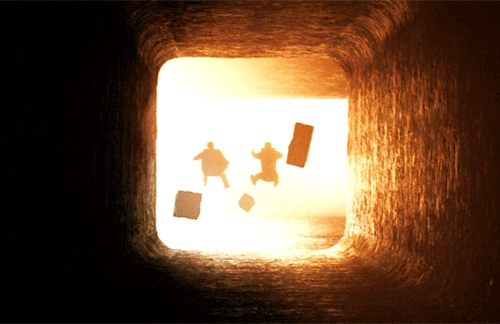Cognitive Load Theory And Language Learning
Cognitive Load Theory and Language Learning
aka “Me Pretending I’m Doing My Assignment”.
Cognitive Load Theory is what I’m currently studying in educational psychology and you guys seem to like it when I talk about theories of second language acquisition so here we go.
What you first need to know is this:
Learning is essentially engraining information, concepts, and processes, in our long-term memory.
We take in new information through our sensory memory, which is processed in our working memory. Working memory is the main one to keep in mind here. What we do with information in our working memory determines whether or not it ends up in our long-term memory.

So what’s cognitive load?
Cognitive load is basically the amount of space we have in our working memory. In other words, it’s the amount of mental space, or our capacity to put in mental effort. There are three sections that make up our total cognitive load:
Intrinsic load = the effort it takes to process the inherent difficulty of the task/information.
Extraneous load = the effort it takes to process unnecessary information that doesn’t contribute to learning.
Germane load = the effort it takes to encode the new information into our long-term memory.
As teachers, even of ourselves, we want to manage intrinsic load, and reduce the amount of extraneous load as much as possible, so as to make room in our cognitive capacity for germane load - actually learning the information.

Applying this to language-learning.
Have conversations with yourself in your TL: This is known as the “Imagination and Self Explanation Effect”, and has shown to increase the construction of schemas (commitment of information to long-term memory). Talk to yourself. Explain new concepts to yourself. Pretend you’re in your target language country and you need to ask a stranger how to get to the train station.
Avoid using too many new resources at once: We all know that just using Duolingo isn’t going to teach you a language. With that being said, it’s important to not use too many resources either, particularly in the beginner stages when intrinsic load is high. If you’re using three textbooks, extraneous load will increase because you’re constantly having to adjust to the new textbook’s different colour scheme, different font, different flow and presentation of information. You’ll have less room left for the all-important germane load. Try to stick to one textbook.
Make sure input is comprehensive: This is a favourite of mine. If I’m a beginner in a language, watching a TV show for adults will hardly contribute to my learning at all. All my working memory capacity will be consumed by intrinsic load, because the task is far too difficult, and this will leave no room for germane load. Making input more comprehensive can mean choosing texts that are written for a younger audience, and/or texts with which you are already familiar (because understanding plot, character relationships, etc. also uses load).
Learn languages that are similar to each other: The disadvantage of learning similar languages is getting them mixed up. However, the advantage of learning a language similar to one that we already know, is that we have already constructed schemas in our long-term memory, which can be retrieved (see first diagram) when processing information from the new language in our working memory. Again, this reduces cognitive overload, and we can learn faster.
Get a teacher: I know many of you won’t want to hear this, but self-studying overwhelms cognitive load to a massive degree. When you are having to find your own resources, understand and explain concepts to yourself, etc. this all requires load, and this can all be removed with a teacher, freeing up more space for germane load. In other words, you’re expending a lot of your limited capacity for mental effort on all these unnecessary things when you could be using that effort on actually learning the content. Indeed, the main takeaway from this theory is that explicit teaching works best.
Stop translating: I see a lot of posts where people write out a sentence or paragraph translated into several of their target languages, The actual effort of translating, as opposed to thinking in your TL, uses load.
More Posts from Linguisticinspiration and Others
learning languages because i need to understand and be friends with every person on earth <3



Follow @productive-tips for more tips and content like this posted daily! Handpicked and curated with love :)
I know it's been a while but I fixed Jalo's phonology and orthography.






erika’s film diary → arrival (2016) dir. denis villeneuve
If you could see your whole life from start to finish, would you change things?





if you save them please like or credit @swwtcreature on twitter








Language is the foundation of civilization. It is the glue that holds a people together. It is the first weapon drawn in a conflict. Arrival (2016)





But now I’m not so sure I believe in beginnings and endings. There are days that define your story beyond your life. Like the day they arrived.
Arrival (2016) dir. Denis Villeneuve
Romance languages comparison (Spanish - French - Catalan - Italian - Portuguese [English])
Flores - fleurs - flors - fiori - flores (flowers)
la amapola - le coquelicot - la rosella - il papavero - a papoula (poppy)
la azucena - le lis - el lliri - il giglio - o lírio (lily)
la begonia - le bégonia - la begònia - la begonia - a begônia (begonia)
la caléndula - la calendule - la calèndula - la calendola - a calêndula (calendula)
la camelia - le camélia - la camèlia - la camelia - a camélia (camellia)
el clavel - l’oeillet (m) - el clavell - il garofano - o cravo (carnation)
el crisantemo - le chrysanthème - el crisantem - il crisantemo - o crisântemo (chrysanthemum)
la dalia - le dahlia - la dàlia - la dalia - a dália (dahlia)
la flor de loto - la fleur de lotus - la flor de lotus - il fiore di loto - a flor de lótus (lotus flower)
el girasol - le tournesol - el gira-sol - il girasole - o girassol (sunflower)
la hortensia - le hortensia - la hortènsia - l’ortensia (f) - a hortênsia (hydrangea)
el jacinto - le jacinthe - el jacint - il giacinto - o jacinto (hyacinth)
el jazmín - le jasmin - el gessamí - il gelsomino - o jasmim (jasmine)
la lavanda - la lavande - l’espígol (m) - la lavanda - a lavanda (lavender)
la lila - le lilas - la lila - il lilla - o lilás (lilac)
el lirio - le lis - el lliri - il giglio - o lírio (lily)
la margarita - la marguerite - la margarida - la margherita - a margarida (daisy)
el narciso - la jonquille - el narcís - il narciso - o narciso (daffodil)
el nenúfar - le nénuphar - el nenúfar - la ninfea - o lírio d’água (water lily)
la orquídea - l’orchidée (f) - l’orquídia (f) - l’orchidea (f) - a orquídea (orchid)
la peonía - la pivoine - la peònia - la peonia - a peônia (peony)
la petunia - le pétunia - la petúnia - la petunia - a petúnia (petunia)
la rosa - la rose - la rosa - la rosa - a rosa (rose)
el tulipán - la tulipe - la tulipa - il tulipano - a tulipa (tulip)
la violeta - la violette - la violeta - la viola - a violeta (violet)
I have only compared the languages I have studied/dabbled in, not all the Romance languages.





-
 uwu-scraptrappy liked this · 1 year ago
uwu-scraptrappy liked this · 1 year ago -
 autumn-tree liked this · 2 years ago
autumn-tree liked this · 2 years ago -
 linguisticinspiration reblogged this · 3 years ago
linguisticinspiration reblogged this · 3 years ago -
 luclavoie liked this · 3 years ago
luclavoie liked this · 3 years ago -
 duolingomasterpieces reblogged this · 3 years ago
duolingomasterpieces reblogged this · 3 years ago -
 xidigahacirka liked this · 3 years ago
xidigahacirka liked this · 3 years ago -
 draquula liked this · 3 years ago
draquula liked this · 3 years ago -
 saturnianbrownie reblogged this · 3 years ago
saturnianbrownie reblogged this · 3 years ago -
 browneyedmergirl liked this · 3 years ago
browneyedmergirl liked this · 3 years ago -
 lux-aaa liked this · 3 years ago
lux-aaa liked this · 3 years ago -
 luvbeomie liked this · 3 years ago
luvbeomie liked this · 3 years ago -
 sadie-the-dragon-slayer liked this · 3 years ago
sadie-the-dragon-slayer liked this · 3 years ago -
 andrejupiter liked this · 4 years ago
andrejupiter liked this · 4 years ago -
 princess-of-water-lilies reblogged this · 4 years ago
princess-of-water-lilies reblogged this · 4 years ago -
 princess-of-water-lilies liked this · 4 years ago
princess-of-water-lilies liked this · 4 years ago -
 neptunemxon reblogged this · 4 years ago
neptunemxon reblogged this · 4 years ago -
 neptunemxon liked this · 4 years ago
neptunemxon liked this · 4 years ago -
 eternalsoulofdorian liked this · 4 years ago
eternalsoulofdorian liked this · 4 years ago -
 grlyntng reblogged this · 4 years ago
grlyntng reblogged this · 4 years ago -
 grlyntng liked this · 4 years ago
grlyntng liked this · 4 years ago -
 studybme reblogged this · 4 years ago
studybme reblogged this · 4 years ago -
 study-with-wastel reblogged this · 4 years ago
study-with-wastel reblogged this · 4 years ago -
 study-with-wastel liked this · 4 years ago
study-with-wastel liked this · 4 years ago -
 aezlo liked this · 4 years ago
aezlo liked this · 4 years ago -
 ionthevoid liked this · 4 years ago
ionthevoid liked this · 4 years ago -
 cordeliastudies reblogged this · 4 years ago
cordeliastudies reblogged this · 4 years ago -
 cordeliastudies liked this · 4 years ago
cordeliastudies liked this · 4 years ago -
 november-study reblogged this · 4 years ago
november-study reblogged this · 4 years ago -
 wonkyfaint liked this · 4 years ago
wonkyfaint liked this · 4 years ago -
 thelastuni-star liked this · 4 years ago
thelastuni-star liked this · 4 years ago -
 caitotic-academia liked this · 4 years ago
caitotic-academia liked this · 4 years ago -
 tigridiaflor reblogged this · 4 years ago
tigridiaflor reblogged this · 4 years ago -
 welcome-to-the-battle liked this · 4 years ago
welcome-to-the-battle liked this · 4 years ago -
 thelaughingbird reblogged this · 4 years ago
thelaughingbird reblogged this · 4 years ago -
 thelaughingbird liked this · 4 years ago
thelaughingbird liked this · 4 years ago -
 literaturebylamplight liked this · 4 years ago
literaturebylamplight liked this · 4 years ago -
 maraskull reblogged this · 4 years ago
maraskull reblogged this · 4 years ago -
 the-shooting-star liked this · 4 years ago
the-shooting-star liked this · 4 years ago

Inspiration for a future linguist and literature professor
192 posts